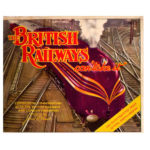Description
The four main railway companies each published a history of their wartime service. The GWR – always a cat that preferred to walk by itself was first off the mark with two, the first before the war was over, the second dealing with the service of its ships in Operation Dynamo, came out the following year-
Next came histories from the Southern, and the LMS. The Southern’s suffered fro being written by a golf reporter, unemployed as so many courses were given over to “Dig For Victory” and travel to the USA for the frivolous business of writing about golf was forbidden. Darwin was clearly out of his comfort zone, and one feels sorry for whoever Public Relations Officer Cuthbert Grasemann deputed to be his minder.
Nashe’s book for the LMS is much better, benefits from a larger format, and has some splendid colour illustrations
Last but by no means least came the LNER’S contribution, written by a noted economic journalist, it is rather more serious in tone mentioning the cost of the war to the railways and with nationalisation on the horizon should be seen as part of the LNER campaign to ensure a fair deal for shareholders.
The four companies, while continuing, on a much reduced scale to promote their own businesses, as early as 1940, were advertising as “The British Railways” and they established a joint Press Office.
This organisation, lately run by George Dow pruduced two very well illustrated booklets covering the network as a whole.
It can be said that the individual company war histories give a tactical view of the railway at war, but TIME TABLE FOR VICTORY is a strategic study, which illustrates the herculean task undertaken by the Railway Executive Committee in co-ordinating the entire effort. It is very well written and contains some unusual material, like the LUFTWAFFE aerial photograph of a failed attack on the Forth Bridge.



Reviews
There are no reviews yet.